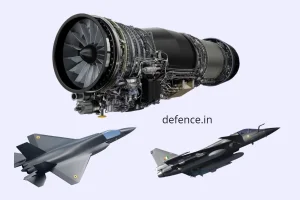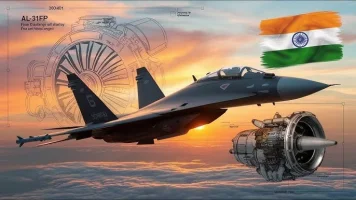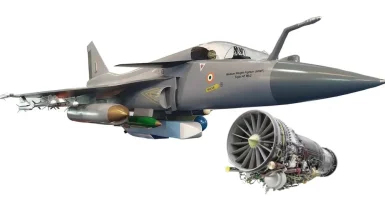- Views: 2K
- Replies: 12
In an era of rapid military modernisation across its borders, India's strategic planners are considering the future of the nation's air power.
A key proposal gaining traction is the development of a sixth-generation combat aircraft, not as a conventional fighter, but as a long-range strategic strike bomber.
This forward-thinking approach aims to address significant threats, particularly from China's advanced missile systems, and ensure the Indian Air Force (IAF) can maintain its operational edge in any future conflict.
The primary concern driving this concept is the vulnerability of India's northern airbases. These forward airfields, located near the Line of Actual Control (LAC), are critical for operations but lie within the range of sophisticated Chinese missile systems like the DF-21D and the DF-26.
In the event of a conflict, these assets could be targeted and potentially neutralised, severely limiting the IAF's ability to respond. A strategic bomber would counter this threat by fundamentally changing how air power is projected.
The proposed solution involves a next-generation bomber capable of flying missions over 5,000 to 6,000 kilometres. Such a platform could operate from secure airbases in southern India, for instance in states like Tamil Nadu or Karnataka, which are far beyond the reach of an adversary's conventional missile threat.
This capability would allow the IAF to conduct precision strikes against targets along the northern frontiers and deep into enemy territory before returning safely to its home base, ensuring operational continuity even if northern infrastructure is compromised.
A long-range bomber would offer several key advantages, significantly enhancing India’s strategic deterrence and power projection. The ability to hold high-value targets at risk from secure, distant locations would serve as a powerful deterrent to aggression.
Furthermore, it would allow India to project its military influence across the wider Indo-Pacific region, reinforcing its role as a net security provider. This operational flexibility ensures that the IAF can sustain a high tempo of operations during a prolonged conflict, preserving its combat potential.
Globally, the development of sixth-generation air combat platforms is already underway.
The United States has its Next Generation Air Dominance (NGAD) program, while the United Kingdom, Japan, and Italy are collaborating on the Global Combat Air Programme (GCAP).
For India, a future bomber would be the next logical step beyond its current fifth-generation Advanced Medium Combat Aircraft (AMCA) program. This new platform would integrate cutting-edge technologies, including advanced stealth to evade enemy radar, artificial intelligence for superior situational awareness and decision-making, and the ability to integrate seamlessly with naval, ground, and space assets in a multi-domain battlespace.
Ultimately, envisioning India's sixth-generation platform as a strategic bomber is a move to secure the country's long-term national interests. It represents a shift towards greater strategic autonomy and operational resilience.
Achieving this vision will require sustained investment in research and development, fostering international partnerships for technology sharing, and a steadfast commitment to long-term defence planning.
By doing so, India can ensure its air force remains a formidable power capable of defending its sovereignty in an increasingly complex geopolitical landscape.



